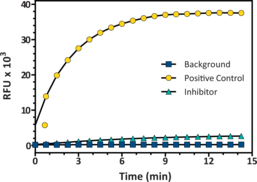Cayman
Showing 30601–30750 of 45550 results
-
MTT is a cell-permeable and positively charged tetrazolium dye that is used to detect reductive metabolism in cells.{14422} It is taken up by cells through the plasma membrane and then reduced to formazan by intracellular NAD(P)H-oxidoreductases. It is frequently used in colorimetric assays to measure cell proliferation, cytotoxicity, and apoptosis.
Brand:CaymanSKU:21795 -Out of stock
MTT is a cell-permeable and positively charged tetrazolium dye that is used to detect reductive metabolism in cells.{14422} It is taken up by cells through the plasma membrane and then reduced to formazan by intracellular NAD(P)H-oxidoreductases. It is frequently used in colorimetric assays to measure cell proliferation, cytotoxicity, and apoptosis.
Brand:CaymanSKU:21795 -Out of stock
MTT is a cell-permeable and positively charged tetrazolium dye that is used to detect reductive metabolism in cells.{14422} It is taken up by cells through the plasma membrane and then reduced to formazan by intracellular NAD(P)H-oxidoreductases. It is frequently used in colorimetric assays to measure cell proliferation, cytotoxicity, and apoptosis.
Brand:CaymanSKU:21795 -Out of stock
MTT is a cell-permeable and positively charged tetrazolium dye that is used to detect reductive metabolism in cells.{14422} It is taken up by cells through the plasma membrane and then reduced to formazan by intracellular NAD(P)H-oxidoreductases. It is frequently used in colorimetric assays to measure cell proliferation, cytotoxicity, and apoptosis.
Brand:CaymanSKU:21795 -Out of stock
Cayman’s MTT Proliferation Assay Kit provides an easy to use tool for studying the induction and inhibition of cell proliferation in any in vitro model. This kit will also allow investigators to screen drug candidates involved in cell cycle regulation. In this assay, MTT is taken up by cells through the plasma membrane potential and then reduced to formazan by intracellular NAD(P)H-oxidoreductases.{14422}
Brand:CaymanSKU:10009365 - 480 wellsAvailable on backorder
Mubritinib is a selective inhibitor of the human epidermal growth factor receptor 2 (HER2), inhibiting HER2 phosphorylation with an IC50 value of 6 nM.{21787} It is without effect on EGFR, FGFR, PDGFR, JAK1, Src, and Blk (IC50 > 25 μM).{21787} Mubritinib inhibits the proliferation of breast, bladder, kidney, and prostate cancer cells in vitro and in vivo.{21787,21788}
Brand:CaymanSKU:12096 - 10 mgAvailable on backorder
Mubritinib is a selective inhibitor of the human epidermal growth factor receptor 2 (HER2), inhibiting HER2 phosphorylation with an IC50 value of 6 nM.{21787} It is without effect on EGFR, FGFR, PDGFR, JAK1, Src, and Blk (IC50 > 25 μM).{21787} Mubritinib inhibits the proliferation of breast, bladder, kidney, and prostate cancer cells in vitro and in vivo.{21787,21788}
Brand:CaymanSKU:12096 - 100 mgAvailable on backorder
Mubritinib is a selective inhibitor of the human epidermal growth factor receptor 2 (HER2), inhibiting HER2 phosphorylation with an IC50 value of 6 nM.{21787} It is without effect on EGFR, FGFR, PDGFR, JAK1, Src, and Blk (IC50 > 25 μM).{21787} Mubritinib inhibits the proliferation of breast, bladder, kidney, and prostate cancer cells in vitro and in vivo.{21787,21788}
Brand:CaymanSKU:12096 - 5 mgAvailable on backorder
Mubritinib is a selective inhibitor of the human epidermal growth factor receptor 2 (HER2), inhibiting HER2 phosphorylation with an IC50 value of 6 nM.{21787} It is without effect on EGFR, FGFR, PDGFR, JAK1, Src, and Blk (IC50 > 25 μM).{21787} Mubritinib inhibits the proliferation of breast, bladder, kidney, and prostate cancer cells in vitro and in vivo.{21787,21788}
Brand:CaymanSKU:12096 - 50 mgAvailable on backorder
Mulberroside A is a phenol and stilbene glucoside form of oxyresveratrol (Item No. 12028) originally isolated from M. alba (mulberry) roots that has diverse biological activities.{48392,48393,48395,48394} It inhibits pregnane X receptor-mediated P-glycoprotein (P-gp) luciferase reporter activity induced by rifampicin (Item No. 14423) in LS174T cells when used at concentrations ranging from 5 to 20 μM.{48392} Mulberroside A decreases expression of TNF-α, IL-1β, and IL-6, inhibits caspase-1 activation, and increases cell viability in an isolated rat cortical neuron model of oxygen-glucose deprivation-induced ischemia and reperfusion injury.{48393} Topical administration of mulberroside A (2 and 5% v/v) reduces UVB-induced hyperpigmentation, levels of the melanogenesis enzymes tyrosinase, tyrosinase-related protein 1 (TRP-1), and microphthalmia-associated transcription factor (MITF), and tyrosinase activity in brown guinea pig skin.{48395} Mulberroside A (10, 20, and 40 mg/kg) decreases serum levels of uric acid, creatinine, and urea nitrogen, reduces renal vacuolar and granular degeneration, and increases fractional excretion of uric acid and urinary urate excretion in hyperuricemic mice.{48394}
Brand:CaymanSKU:27545 - 100 mgAvailable on backorder
Mulberroside A is a phenol and stilbene glucoside form of oxyresveratrol (Item No. 12028) originally isolated from M. alba (mulberry) roots that has diverse biological activities.{48392,48393,48395,48394} It inhibits pregnane X receptor-mediated P-glycoprotein (P-gp) luciferase reporter activity induced by rifampicin (Item No. 14423) in LS174T cells when used at concentrations ranging from 5 to 20 μM.{48392} Mulberroside A decreases expression of TNF-α, IL-1β, and IL-6, inhibits caspase-1 activation, and increases cell viability in an isolated rat cortical neuron model of oxygen-glucose deprivation-induced ischemia and reperfusion injury.{48393} Topical administration of mulberroside A (2 and 5% v/v) reduces UVB-induced hyperpigmentation, levels of the melanogenesis enzymes tyrosinase, tyrosinase-related protein 1 (TRP-1), and microphthalmia-associated transcription factor (MITF), and tyrosinase activity in brown guinea pig skin.{48395} Mulberroside A (10, 20, and 40 mg/kg) decreases serum levels of uric acid, creatinine, and urea nitrogen, reduces renal vacuolar and granular degeneration, and increases fractional excretion of uric acid and urinary urate excretion in hyperuricemic mice.{48394}
Brand:CaymanSKU:27545 - 25 mgAvailable on backorder
Mulberroside A is a phenol and stilbene glucoside form of oxyresveratrol (Item No. 12028) originally isolated from M. alba (mulberry) roots that has diverse biological activities.{48392,48393,48395,48394} It inhibits pregnane X receptor-mediated P-glycoprotein (P-gp) luciferase reporter activity induced by rifampicin (Item No. 14423) in LS174T cells when used at concentrations ranging from 5 to 20 μM.{48392} Mulberroside A decreases expression of TNF-α, IL-1β, and IL-6, inhibits caspase-1 activation, and increases cell viability in an isolated rat cortical neuron model of oxygen-glucose deprivation-induced ischemia and reperfusion injury.{48393} Topical administration of mulberroside A (2 and 5% v/v) reduces UVB-induced hyperpigmentation, levels of the melanogenesis enzymes tyrosinase, tyrosinase-related protein 1 (TRP-1), and microphthalmia-associated transcription factor (MITF), and tyrosinase activity in brown guinea pig skin.{48395} Mulberroside A (10, 20, and 40 mg/kg) decreases serum levels of uric acid, creatinine, and urea nitrogen, reduces renal vacuolar and granular degeneration, and increases fractional excretion of uric acid and urinary urate excretion in hyperuricemic mice.{48394}
Brand:CaymanSKU:27545 - 250 mgAvailable on backorder
Mulberroside A is a phenol and stilbene glucoside form of oxyresveratrol (Item No. 12028) originally isolated from M. alba (mulberry) roots that has diverse biological activities.{48392,48393,48395,48394} It inhibits pregnane X receptor-mediated P-glycoprotein (P-gp) luciferase reporter activity induced by rifampicin (Item No. 14423) in LS174T cells when used at concentrations ranging from 5 to 20 μM.{48392} Mulberroside A decreases expression of TNF-α, IL-1β, and IL-6, inhibits caspase-1 activation, and increases cell viability in an isolated rat cortical neuron model of oxygen-glucose deprivation-induced ischemia and reperfusion injury.{48393} Topical administration of mulberroside A (2 and 5% v/v) reduces UVB-induced hyperpigmentation, levels of the melanogenesis enzymes tyrosinase, tyrosinase-related protein 1 (TRP-1), and microphthalmia-associated transcription factor (MITF), and tyrosinase activity in brown guinea pig skin.{48395} Mulberroside A (10, 20, and 40 mg/kg) decreases serum levels of uric acid, creatinine, and urea nitrogen, reduces renal vacuolar and granular degeneration, and increases fractional excretion of uric acid and urinary urate excretion in hyperuricemic mice.{48394}
Brand:CaymanSKU:27545 - 50 mgAvailable on backorder
Cayman’s Multi-Parameter Apoptosis Assay Kit is a simple way to probe for multiple different apoptotic readouts at the same time. This kit employs FITC-conjugated Annexin V as a probe for phosphatidylserine on the outer membrane of apoptotic cells, TMRE as a probe for Δψm, RedDotTM2 as an indicator of plasma membrane permeability/cell viability, and Hoechst Dye to demonstrate nuclear morphology. The kit allows phenotypic characterization of multiple different cell death parameters at the single-cell level. The reagents provided in the kit are sufficient to run 100 samples.
Brand:CaymanSKU:601280 - 100 testsAvailable on backorder
Cayman’s Multidrug Resistance Assay Kit provides a convenient tool for studying the modulation of cellular multidrug resistance (MDR) machinery. The kit employs calcein AM, a cell-permeable nonfluorescent dye, which is cleaved intracellularly to yield the impermeant fluorescent molecule, calcein. This calcein is rapidly excluded from cells expressing the MDR proteins P-gp or MRP, and so functions as a probe for the detection of chemical compounds inhibiting MDR proteins. Propidium iodide is provided as a stain for marking dead or damaged cells. Cyclosporin A, a competitive inhibitor of MDR proteins, and verapamil, a noncompetitive inhibitor, are included as controls.
Brand:CaymanSKU:600370 - 1,000 testsAvailable on backorder
Multiflorenol is a triterpene that has been found in T. kirilowii seeds.{53307} It inhibits in vitro activation of Epstein-Barr virus early antigen (EBV-EA) induced by the tumor promoter phorbol 12-myristate 13-acetate (TPA; Item No. 10008014) in a concentration-dependent manner.
Brand:CaymanSKU:29709 - 1 mgAvailable on backorder
Multiflorenol is a triterpene that has been found in T. kirilowii seeds.{53307} It inhibits in vitro activation of Epstein-Barr virus early antigen (EBV-EA) induced by the tumor promoter phorbol 12-myristate 13-acetate (TPA; Item No. 10008014) in a concentration-dependent manner.
Brand:CaymanSKU:29709 - 5 mgAvailable on backorder
Muraglitazar is a dual agonist of peroxisome proliferator-activated receptor α (PPARα) and PPARγ (EC50s = 0.32 and 0.11 μM, respectively).{13427} It is selective for PPARα/γ over other nuclear receptors, including PPARδ, RXRα, RARs, estrogen receptor α (ERα), ERβ, androgen receptor (AR), and progesterone receptor (PR). Muraglitazar (50 μM) reduces the size of lipid droplets in oleic acid-treated HepaRG human hepatocytes.{42456} It reduces plasma levels of glucose, triglycerides, free fatty acids, and insulin by 54, 33, 62, and 48%, respectively, in db/db mice when administered at a dose of 10 mg/kg per day.{13427} Muraglitazar (10 mg/kg per day) reduces plasma levels of glucose, triglycerides, and cholesterol in diet-induced obese mice.{31312} Muraglitazar also inhibits LPS-induced increases in nitric oxide (NO) production and IL-6, TNF-α, and inducible nitric oxide synthase (iNOS) protein levels in J774 murine macrophages in a concentration-dependent manner.{42457} It inhibits carrageenan-induced paw edema in mice when administered at doses ranging from 12.5 to 50 mg/kg.
Brand:CaymanSKU:10007853 - 1 mgAvailable on backorder
Murideoxycholic acid (MDCA) is a secondary bile acid produced from α-muricholic acid (Item No. 20291) and β-muricholic acid (Item No. 20287).{45190} It is also a metabolite of lithocholic acid (Item No. 20253) in liver S9 fractions from humans and other species.{46202} MDCA prevents gallstone formation in hamsters fed a lithogenic diet but does not resolve gallstones in prairie dogs fed a high cholesterol diet.{37053,37054} Gallstones formed during MDCA administration after a high cholesterol diet are comprised of an insoluble calcium salt of murideoxycholyl taurine.{37054} In humans, MDCA is rapidly absorbed and is metabolized as an endogenous bile acid with a half-life of approximately 3.5 days.{37055}
Brand:CaymanSKU:20290 -Available on backorder
Murideoxycholic acid (MDCA) is a secondary bile acid produced from α-muricholic acid (Item No. 20291) and β-muricholic acid (Item No. 20287).{45190} It is also a metabolite of lithocholic acid (Item No. 20253) in liver S9 fractions from humans and other species.{46202} MDCA prevents gallstone formation in hamsters fed a lithogenic diet but does not resolve gallstones in prairie dogs fed a high cholesterol diet.{37053,37054} Gallstones formed during MDCA administration after a high cholesterol diet are comprised of an insoluble calcium salt of murideoxycholyl taurine.{37054} In humans, MDCA is rapidly absorbed and is metabolized as an endogenous bile acid with a half-life of approximately 3.5 days.{37055}
Brand:CaymanSKU:20290 -Available on backorder
Murideoxycholic acid (MDCA) is a secondary bile acid produced from α-muricholic acid (Item No. 20291) and β-muricholic acid (Item No. 20287).{45190} It is also a metabolite of lithocholic acid (Item No. 20253) in liver S9 fractions from humans and other species.{46202} MDCA prevents gallstone formation in hamsters fed a lithogenic diet but does not resolve gallstones in prairie dogs fed a high cholesterol diet.{37053,37054} Gallstones formed during MDCA administration after a high cholesterol diet are comprised of an insoluble calcium salt of murideoxycholyl taurine.{37054} In humans, MDCA is rapidly absorbed and is metabolized as an endogenous bile acid with a half-life of approximately 3.5 days.{37055}
Brand:CaymanSKU:20290 -Available on backorder
Muristerone A is a natural analog of 20-hydroxyecdysone (Item No. 16145). It is an agonist of the ecdysteroid receptor (Kd = 1 nM), a nuclear receptor that heterodimerizes with a retinoid X receptor ortholog and regulates arthropod development.{26923,26924,26920} Muristerone A is used as an agonist in ecdysone-inducible gene expression systems in mammalian cells.{26921,26316} However, it inhibits apoptosis in the human colon carcinoma cell line RKO by inducing the upregulation of Bcl-xL, suggesting limitations in its use in certain types of studies.{26922}
Brand:CaymanSKU:11741 - 1 mgAvailable on backorder
Muristerone A is a natural analog of 20-hydroxyecdysone (Item No. 16145). It is an agonist of the ecdysteroid receptor (Kd = 1 nM), a nuclear receptor that heterodimerizes with a retinoid X receptor ortholog and regulates arthropod development.{26923,26924,26920} Muristerone A is used as an agonist in ecdysone-inducible gene expression systems in mammalian cells.{26921,26316} However, it inhibits apoptosis in the human colon carcinoma cell line RKO by inducing the upregulation of Bcl-xL, suggesting limitations in its use in certain types of studies.{26922}
Brand:CaymanSKU:11741 - 250 µgAvailable on backorder
The amino acid γ-aminobutyric acid (GABA) is an inhibitory neurotransmitter that acts through two families of heteromeric ligand-gated ion channels, GABAA and GABAC and a G protein-coupled receptor, GABAB. Muscimol is a full GABAA agonist and partial GABAC agonist. It binds GABAA on both high- and low-affinity sites (Kd = 10 and 270 nM, respectively), stimulating chloride efflux with an EC50 value of 200 nM.{18163} Benzodiazepines enhance the effects of muscimol via GABAA without altering its binding.{18163,18162} Muscimol activates GABAC receptors with an EC50 value of 1.3 μM.{18156} It also acts as an inhibitor of GABAA uptake and a substrate for the GABA-metabolizing enzyme GABA transaminase.{17741} Muscimol impairs memory formation and retrieval in mice and attenuates airway constriction in guinea pigs in vivo.{18159,18160}
Brand:CaymanSKU:-The amino acid γ-aminobutyric acid (GABA) is an inhibitory neurotransmitter that acts through two families of heteromeric ligand-gated ion channels, GABAA and GABAC and a G protein-coupled receptor, GABAB. Muscimol is a full GABAA agonist and partial GABAC agonist. It binds GABAA on both high- and low-affinity sites (Kd = 10 and 270 nM, respectively), stimulating chloride efflux with an EC50 value of 200 nM.{18163} Benzodiazepines enhance the effects of muscimol via GABAA without altering its binding.{18163,18162} Muscimol activates GABAC receptors with an EC50 value of 1.3 μM.{18156} It also acts as an inhibitor of GABAA uptake and a substrate for the GABA-metabolizing enzyme GABA transaminase.{17741} Muscimol impairs memory formation and retrieval in mice and attenuates airway constriction in guinea pigs in vivo.{18159,18160}
Brand:CaymanSKU:-The amino acid γ-aminobutyric acid (GABA) is an inhibitory neurotransmitter that acts through two families of heteromeric ligand-gated ion channels, GABAA and GABAC and a G protein-coupled receptor, GABAB. Muscimol is a full GABAA agonist and partial GABAC agonist. It binds GABAA on both high- and low-affinity sites (Kd = 10 and 270 nM, respectively), stimulating chloride efflux with an EC50 value of 200 nM.{18163} Benzodiazepines enhance the effects of muscimol via GABAA without altering its binding.{18163,18162} Muscimol activates GABAC receptors with an EC50 value of 1.3 μM.{18156} It also acts as an inhibitor of GABAA uptake and a substrate for the GABA-metabolizing enzyme GABA transaminase.{17741} Muscimol impairs memory formation and retrieval in mice and attenuates airway constriction in guinea pigs in vivo.{18159,18160}
Brand:CaymanSKU:-(±)-Muscone is an odoriferous constituent of musk, a glandular secretion originally collected from the male musk deer, that has found use both in the composition of perfumes and in traditional Chinese medicine practices.{26138} (±)-Muscone has been shown to exhibit anti-inflammatory effects by reducing the expression of proinflammatory cytokines both in vitro and in vivo. In a model of vertebral end-plate degeneration, 25 µM (±)-muscone was shown to reverse IL-1β-induced upregulation of IL-1β, TNF-α, cyclooxygenase 2, inducible nitric oxide synthase, matrix metalloproteinase 13, aggrecanase 2, and nitric oxide.{26139} It has also been reported to be both cardioprotective and neuroprotective during conditions of ischemia and to promote proliferation and differentiation of neural stem cells.{26142,26140,26141}
Brand:CaymanSKU:-(±)-Muscone is an odoriferous constituent of musk, a glandular secretion originally collected from the male musk deer, that has found use both in the composition of perfumes and in traditional Chinese medicine practices.{26138} (±)-Muscone has been shown to exhibit anti-inflammatory effects by reducing the expression of proinflammatory cytokines both in vitro and in vivo. In a model of vertebral end-plate degeneration, 25 µM (±)-muscone was shown to reverse IL-1β-induced upregulation of IL-1β, TNF-α, cyclooxygenase 2, inducible nitric oxide synthase, matrix metalloproteinase 13, aggrecanase 2, and nitric oxide.{26139} It has also been reported to be both cardioprotective and neuroprotective during conditions of ischemia and to promote proliferation and differentiation of neural stem cells.{26142,26140,26141}
Brand:CaymanSKU:-(±)-Muscone is an odoriferous constituent of musk, a glandular secretion originally collected from the male musk deer, that has found use both in the composition of perfumes and in traditional Chinese medicine practices.{26138} (±)-Muscone has been shown to exhibit anti-inflammatory effects by reducing the expression of proinflammatory cytokines both in vitro and in vivo. In a model of vertebral end-plate degeneration, 25 µM (±)-muscone was shown to reverse IL-1β-induced upregulation of IL-1β, TNF-α, cyclooxygenase 2, inducible nitric oxide synthase, matrix metalloproteinase 13, aggrecanase 2, and nitric oxide.{26139} It has also been reported to be both cardioprotective and neuroprotective during conditions of ischemia and to promote proliferation and differentiation of neural stem cells.{26142,26140,26141}
Brand:CaymanSKU:-(±)-Muscone is an odoriferous constituent of musk, a glandular secretion originally collected from the male musk deer, that has found use both in the composition of perfumes and in traditional Chinese medicine practices.{26138} (±)-Muscone has been shown to exhibit anti-inflammatory effects by reducing the expression of proinflammatory cytokines both in vitro and in vivo. In a model of vertebral end-plate degeneration, 25 µM (±)-muscone was shown to reverse IL-1β-induced upregulation of IL-1β, TNF-α, cyclooxygenase 2, inducible nitric oxide synthase, matrix metalloproteinase 13, aggrecanase 2, and nitric oxide.{26139} It has also been reported to be both cardioprotective and neuroprotective during conditions of ischemia and to promote proliferation and differentiation of neural stem cells.{26142,26140,26141}
Brand:CaymanSKU:-Mutant IDH1-IN-1 is a selective inhibitor of the cancer-associated enzyme mutant isocitrate dehydrogenase 1 (IDH1; Item No. 14131) with IC50 values of 42, 4, and 80 nM for homozygous R132H and R132C mutant and heterozygous R132H wild-type enzymes, respectively, for converting α-ketoglutarate (α-KG) to 2-hydroxyglutaric acid (2-HG).{37556} It is selective for IDH1 mutant conversion of α-KG to 2-HG over homozygous wild-type enzyme conversion of isocitrate to α-KG (IC50 = 1,998 nM) and over IDH2 (IC50s = >10,000 nM). Mutant IDH1-IN-1 inhibits 2-HG production in vitro (IC50 = 81.5 nM in HEK293 cells expressing IDH1R132H). It allosterically binds to mutant IDH1 in a magnesium-dependent manner.
Brand:CaymanSKU:-Available on backorder
Mutant IDH1-IN-1 is a selective inhibitor of the cancer-associated enzyme mutant isocitrate dehydrogenase 1 (IDH1; Item No. 14131) with IC50 values of 42, 4, and 80 nM for homozygous R132H and R132C mutant and heterozygous R132H wild-type enzymes, respectively, for converting α-ketoglutarate (α-KG) to 2-hydroxyglutaric acid (2-HG).{37556} It is selective for IDH1 mutant conversion of α-KG to 2-HG over homozygous wild-type enzyme conversion of isocitrate to α-KG (IC50 = 1,998 nM) and over IDH2 (IC50s = >10,000 nM). Mutant IDH1-IN-1 inhibits 2-HG production in vitro (IC50 = 81.5 nM in HEK293 cells expressing IDH1R132H). It allosterically binds to mutant IDH1 in a magnesium-dependent manner.
Brand:CaymanSKU:-Available on backorder
Mutant IDH1-IN-1 is a selective inhibitor of the cancer-associated enzyme mutant isocitrate dehydrogenase 1 (IDH1; Item No. 14131) with IC50 values of 42, 4, and 80 nM for homozygous R132H and R132C mutant and heterozygous R132H wild-type enzymes, respectively, for converting α-ketoglutarate (α-KG) to 2-hydroxyglutaric acid (2-HG).{37556} It is selective for IDH1 mutant conversion of α-KG to 2-HG over homozygous wild-type enzyme conversion of isocitrate to α-KG (IC50 = 1,998 nM) and over IDH2 (IC50s = >10,000 nM). Mutant IDH1-IN-1 inhibits 2-HG production in vitro (IC50 = 81.5 nM in HEK293 cells expressing IDH1R132H). It allosterically binds to mutant IDH1 in a magnesium-dependent manner.
Brand:CaymanSKU:-Available on backorder
Mutant IDH1-IN-1 is a selective inhibitor of the cancer-associated enzyme mutant isocitrate dehydrogenase 1 (IDH1; Item No. 14131) with IC50 values of 42, 4, and 80 nM for homozygous R132H and R132C mutant and heterozygous R132H wild-type enzymes, respectively, for converting α-ketoglutarate (α-KG) to 2-hydroxyglutaric acid (2-HG).{37556} It is selective for IDH1 mutant conversion of α-KG to 2-HG over homozygous wild-type enzyme conversion of isocitrate to α-KG (IC50 = 1,998 nM) and over IDH2 (IC50s = >10,000 nM). Mutant IDH1-IN-1 inhibits 2-HG production in vitro (IC50 = 81.5 nM in HEK293 cells expressing IDH1R132H). It allosterically binds to mutant IDH1 in a magnesium-dependent manner.
Brand:CaymanSKU:-Available on backorder
MX1013 is a dipeptide pan-caspase inhibitor that inhibits caspase-1 (IC50 = 20 nM), caspase-3 (IC50 = 30 nM), and caspase-6, -7, -8, and -9 (IC50s = 5-18 nM).{42697} It is selective for caspases over calpain I, cathepsin B, cathepsin D, renin, thrombin, and Factor Xa (IC50s = >10 μM). MX1013 (0.05 μM) inhibits anti-Fas antibody-induced caspase-3 processing and poly(ADP)ribose polymerase (PARP) cleavage in Jurkat cells, indicating inhibition of apoptosis. It increases survival in a mouse model of anti-Fas antibody-induced liver failure when administered at doses of greater than or equal to 0.25 mg/kg. MX1013 reduces infarct size in rat models of acute myocardial infarction-reperfusion or transient focal brain ischemia-reperfusion injury when administered intravenously as a 20 mg/kg bolus dose followed by a 5 mg/kg per hour infusion.
Brand:CaymanSKU:27904 - 10 mgAvailable on backorder
MX1013 is a dipeptide pan-caspase inhibitor that inhibits caspase-1 (IC50 = 20 nM), caspase-3 (IC50 = 30 nM), and caspase-6, -7, -8, and -9 (IC50s = 5-18 nM).{42697} It is selective for caspases over calpain I, cathepsin B, cathepsin D, renin, thrombin, and Factor Xa (IC50s = >10 μM). MX1013 (0.05 μM) inhibits anti-Fas antibody-induced caspase-3 processing and poly(ADP)ribose polymerase (PARP) cleavage in Jurkat cells, indicating inhibition of apoptosis. It increases survival in a mouse model of anti-Fas antibody-induced liver failure when administered at doses of greater than or equal to 0.25 mg/kg. MX1013 reduces infarct size in rat models of acute myocardial infarction-reperfusion or transient focal brain ischemia-reperfusion injury when administered intravenously as a 20 mg/kg bolus dose followed by a 5 mg/kg per hour infusion.
Brand:CaymanSKU:27904 - 25 mgAvailable on backorder
MX1013 is a dipeptide pan-caspase inhibitor that inhibits caspase-1 (IC50 = 20 nM), caspase-3 (IC50 = 30 nM), and caspase-6, -7, -8, and -9 (IC50s = 5-18 nM).{42697} It is selective for caspases over calpain I, cathepsin B, cathepsin D, renin, thrombin, and Factor Xa (IC50s = >10 μM). MX1013 (0.05 μM) inhibits anti-Fas antibody-induced caspase-3 processing and poly(ADP)ribose polymerase (PARP) cleavage in Jurkat cells, indicating inhibition of apoptosis. It increases survival in a mouse model of anti-Fas antibody-induced liver failure when administered at doses of greater than or equal to 0.25 mg/kg. MX1013 reduces infarct size in rat models of acute myocardial infarction-reperfusion or transient focal brain ischemia-reperfusion injury when administered intravenously as a 20 mg/kg bolus dose followed by a 5 mg/kg per hour infusion.
Brand:CaymanSKU:27904 - 5 mgAvailable on backorder
MX69 is an inhibitor of the interaction between the ubiquitin ligase MDM2 protein and XIAP mRNA.{45164} It binds to the RING domain of MDM2 (Kd = 2.34 µM) and decreases the levels of MDM2 and XIAP in a concentration-dependent manner without affecting the levels of Bcl-2, cIAP-1, and cIAP-2. It induces autoubiquitination and degradation of MDM2 and increases the half-life of p53 in EU-1 cells. MX69 is cytotoxic to a variety of acute lymphoblastic leukemia (ALL) and neuroblastoma cancer cell lines but not to human normal bone marrow mononuclear (NBMM) cells. It increases survival in an EU-1 mouse model of leukemia when administered at a dose of 100 mg/kg.
Brand:CaymanSKU:27224 - 1 mgAvailable on backorder
MX69 is an inhibitor of the interaction between the ubiquitin ligase MDM2 protein and XIAP mRNA.{45164} It binds to the RING domain of MDM2 (Kd = 2.34 µM) and decreases the levels of MDM2 and XIAP in a concentration-dependent manner without affecting the levels of Bcl-2, cIAP-1, and cIAP-2. It induces autoubiquitination and degradation of MDM2 and increases the half-life of p53 in EU-1 cells. MX69 is cytotoxic to a variety of acute lymphoblastic leukemia (ALL) and neuroblastoma cancer cell lines but not to human normal bone marrow mononuclear (NBMM) cells. It increases survival in an EU-1 mouse model of leukemia when administered at a dose of 100 mg/kg.
Brand:CaymanSKU:27224 - 10 mgAvailable on backorder
MX69 is an inhibitor of the interaction between the ubiquitin ligase MDM2 protein and XIAP mRNA.{45164} It binds to the RING domain of MDM2 (Kd = 2.34 µM) and decreases the levels of MDM2 and XIAP in a concentration-dependent manner without affecting the levels of Bcl-2, cIAP-1, and cIAP-2. It induces autoubiquitination and degradation of MDM2 and increases the half-life of p53 in EU-1 cells. MX69 is cytotoxic to a variety of acute lymphoblastic leukemia (ALL) and neuroblastoma cancer cell lines but not to human normal bone marrow mononuclear (NBMM) cells. It increases survival in an EU-1 mouse model of leukemia when administered at a dose of 100 mg/kg.
Brand:CaymanSKU:27224 - 25 mgAvailable on backorder
MX69 is an inhibitor of the interaction between the ubiquitin ligase MDM2 protein and XIAP mRNA.{45164} It binds to the RING domain of MDM2 (Kd = 2.34 µM) and decreases the levels of MDM2 and XIAP in a concentration-dependent manner without affecting the levels of Bcl-2, cIAP-1, and cIAP-2. It induces autoubiquitination and degradation of MDM2 and increases the half-life of p53 in EU-1 cells. MX69 is cytotoxic to a variety of acute lymphoblastic leukemia (ALL) and neuroblastoma cancer cell lines but not to human normal bone marrow mononuclear (NBMM) cells. It increases survival in an EU-1 mouse model of leukemia when administered at a dose of 100 mg/kg.
Brand:CaymanSKU:27224 - 5 mgAvailable on backorder
MY-5445 is a selective inhibitor of the cyclic GMP (cGMP) phosphodiesterase, PDE5, with a Ki value of 1.3 µM.{32858,32859} It inhibits calcium- and cAMP-selective PDEs with Ki values of >1,000 and 915 µM, respectively.{32858} MY-5445 has been shown to relax intact strips of rat aorta with an EC50 value of 4 µM.{32858}
Brand:CaymanSKU:20872 -Out of stock
MY-5445 is a selective inhibitor of the cyclic GMP (cGMP) phosphodiesterase, PDE5, with a Ki value of 1.3 µM.{32858,32859} It inhibits calcium- and cAMP-selective PDEs with Ki values of >1,000 and 915 µM, respectively.{32858} MY-5445 has been shown to relax intact strips of rat aorta with an EC50 value of 4 µM.{32858}
Brand:CaymanSKU:20872 -Out of stock
MY-5445 is a selective inhibitor of the cyclic GMP (cGMP) phosphodiesterase, PDE5, with a Ki value of 1.3 µM.{32858,32859} It inhibits calcium- and cAMP-selective PDEs with Ki values of >1,000 and 915 µM, respectively.{32858} MY-5445 has been shown to relax intact strips of rat aorta with an EC50 value of 4 µM.{32858}
Brand:CaymanSKU:20872 -Out of stock
MY-5445 is a selective inhibitor of the cyclic GMP (cGMP) phosphodiesterase, PDE5, with a Ki value of 1.3 µM.{32858,32859} It inhibits calcium- and cAMP-selective PDEs with Ki values of >1,000 and 915 µM, respectively.{32858} MY-5445 has been shown to relax intact strips of rat aorta with an EC50 value of 4 µM.{32858}
Brand:CaymanSKU:20872 -Out of stock
Myceliothermophin E is a polyketide-amino acid hybrid fungal metabolite that has been found in T. thermophilus and has anticancer and antimicrobial activities.{46920,46921} It is cytotoxic to DLD-1, Hep3B, HepG2, and HGC-27 cancer cells (IC50s = 0.32, 0.42, 0.26, and 0.08 μg/ml, respectively).{46920} Myceliothermophin E is active against methicillin-resistant, but not -sensitive, S. aureus (MICs = 15.8 and >100 μM, respectively).{46921}
Brand:CaymanSKU:30053 - 1 mgAvailable on backorder
Myclobutanil (Item No. 24100) is an analytical reference standard categorized as a triazole fungicide.{41397} It has been found as a contaminant in concentrated Cannabis extracts from the California medical Cannabis market. This product is intended for research and forensic applications.
Brand:CaymanSKU:24100 - 10 mgAvailable on backorder
Myclobutanil (Item No. 24100) is an analytical reference standard categorized as a triazole fungicide.{41397} It has been found as a contaminant in concentrated Cannabis extracts from the California medical Cannabis market. This product is intended for research and forensic applications.
Brand:CaymanSKU:24100 - 5 mgAvailable on backorder
Mycophenolate mofetil is a prodrug form of mycophenolic acid (Item No. 21716).{37581,37582,37583} In vivo, mycophenolate mofetil (12.5 mg/kg) increases duration of transplant motor activity in a rabbit model of retroperitoneal heterotopic heart transplantation.{37581} It eliminates formation of microbleeds and hemorrhages in the cerebrum of stroke-prone spontaneously hypertensive rats.{37582} Mycophenolate mofetil also lowers mean arterial pressure (MAP) and reduces urinary albumin excretion and glomerulosclerosis, markers of renal damage, in a mouse model of systemic lupus erythematosus (SLE).{37583}
Brand:CaymanSKU:-Mycophenolate mofetil is a prodrug form of mycophenolic acid (Item No. 21716).{37581,37582,37583} In vivo, mycophenolate mofetil (12.5 mg/kg) increases duration of transplant motor activity in a rabbit model of retroperitoneal heterotopic heart transplantation.{37581} It eliminates formation of microbleeds and hemorrhages in the cerebrum of stroke-prone spontaneously hypertensive rats.{37582} Mycophenolate mofetil also lowers mean arterial pressure (MAP) and reduces urinary albumin excretion and glomerulosclerosis, markers of renal damage, in a mouse model of systemic lupus erythematosus (SLE).{37583}
Brand:CaymanSKU:-Mycophenolate mofetil is a prodrug form of mycophenolic acid (Item No. 21716).{37581,37582,37583} In vivo, mycophenolate mofetil (12.5 mg/kg) increases duration of transplant motor activity in a rabbit model of retroperitoneal heterotopic heart transplantation.{37581} It eliminates formation of microbleeds and hemorrhages in the cerebrum of stroke-prone spontaneously hypertensive rats.{37582} Mycophenolate mofetil also lowers mean arterial pressure (MAP) and reduces urinary albumin excretion and glomerulosclerosis, markers of renal damage, in a mouse model of systemic lupus erythematosus (SLE).{37583}
Brand:CaymanSKU:-Mycophenolate mofetil is a prodrug form of mycophenolic acid (Item No. 21716).{37581,37582,37583} In vivo, mycophenolate mofetil (12.5 mg/kg) increases duration of transplant motor activity in a rabbit model of retroperitoneal heterotopic heart transplantation.{37581} It eliminates formation of microbleeds and hemorrhages in the cerebrum of stroke-prone spontaneously hypertensive rats.{37582} Mycophenolate mofetil also lowers mean arterial pressure (MAP) and reduces urinary albumin excretion and glomerulosclerosis, markers of renal damage, in a mouse model of systemic lupus erythematosus (SLE).{37583}
Brand:CaymanSKU:-Mycophenolate mofetil-d4 is intended for use as an internal standard for the quantification of mycophenolate mofetil (Item No. 13988) by GC- or LC-MS. Mycophenolate mofetil is a prodrug form of mycophenolic acid (Item No. 21716).{37581,37582,37583} In vivo, mycophenolate mofetil (12.5 mg/kg) increases duration of transplant motor activity in a rabbit model of retroperitoneal heterotopic heart transplantation.{37581} It eliminates formation of microbleeds and hemorrhages in the cerebrum of stroke-prone spontaneously hypertensive rats.{37582} Mycophenolate mofetil also lowers mean arterial pressure (MAP) and reduces urinary albumin excretion and glomerulosclerosis, markers of renal damage, in a mouse model of systemic lupus erythematosus (SLE).{37583}
Brand:CaymanSKU:25281 - 1 mgAvailable on backorder
Mycophenolate mofetil-d4 is intended for use as an internal standard for the quantification of mycophenolate mofetil (Item No. 13988) by GC- or LC-MS. Mycophenolate mofetil is a prodrug form of mycophenolic acid (Item No. 21716).{37581,37582,37583} In vivo, mycophenolate mofetil (12.5 mg/kg) increases duration of transplant motor activity in a rabbit model of retroperitoneal heterotopic heart transplantation.{37581} It eliminates formation of microbleeds and hemorrhages in the cerebrum of stroke-prone spontaneously hypertensive rats.{37582} Mycophenolate mofetil also lowers mean arterial pressure (MAP) and reduces urinary albumin excretion and glomerulosclerosis, markers of renal damage, in a mouse model of systemic lupus erythematosus (SLE).{37583}
Brand:CaymanSKU:25281 - 5 mgAvailable on backorder
Mycophenolate mofetil-d4 is intended for use as an internal standard for the quantification of mycophenolate mofetil (Item No. 13988) by GC- or LC-MS. Mycophenolate mofetil is a prodrug form of mycophenolic acid (Item No. 21716).{37581,37582,37583} In vivo, mycophenolate mofetil (12.5 mg/kg) increases duration of transplant motor activity in a rabbit model of retroperitoneal heterotopic heart transplantation.{37581} It eliminates formation of microbleeds and hemorrhages in the cerebrum of stroke-prone spontaneously hypertensive rats.{37582} Mycophenolate mofetil also lowers mean arterial pressure (MAP) and reduces urinary albumin excretion and glomerulosclerosis, markers of renal damage, in a mouse model of systemic lupus erythematosus (SLE).{37583}
Brand:CaymanSKU:25281 - 500 µgAvailable on backorder
Mycophenolic Acid is an immunosuppressive natural product that inhibits inosine monophosphate dehydrogenase (IC50 = 11 nM; Ki = 30-45 nM).{33309,33310,21841} Inhibition of this enzyme blocks de novo GTP generation as well as RNA and DNA synthesis in lymphocytes, thus preventing lymphocyte proliferation and activation.{21841} It has antifungal, antibacterial, antitumor, and antiviral properties.{33313,33312,33311} Mycophenolic acid, typically used in clinical settings as a chemotherapeutic or immunosuppressant agent, is rapidly conjugated on absorption and circulates mostly in the form of its glucuronide conjugate.{21841,21839,21840}
Brand:CaymanSKU:21716 -Out of stock
Mycophenolic Acid is an immunosuppressive natural product that inhibits inosine monophosphate dehydrogenase (IC50 = 11 nM; Ki = 30-45 nM).{33309,33310,21841} Inhibition of this enzyme blocks de novo GTP generation as well as RNA and DNA synthesis in lymphocytes, thus preventing lymphocyte proliferation and activation.{21841} It has antifungal, antibacterial, antitumor, and antiviral properties.{33313,33312,33311} Mycophenolic acid, typically used in clinical settings as a chemotherapeutic or immunosuppressant agent, is rapidly conjugated on absorption and circulates mostly in the form of its glucuronide conjugate.{21841,21839,21840}
Brand:CaymanSKU:21716 -Out of stock
Mycophenolic Acid is an immunosuppressive natural product that inhibits inosine monophosphate dehydrogenase (IC50 = 11 nM; Ki = 30-45 nM).{33309,33310,21841} Inhibition of this enzyme blocks de novo GTP generation as well as RNA and DNA synthesis in lymphocytes, thus preventing lymphocyte proliferation and activation.{21841} It has antifungal, antibacterial, antitumor, and antiviral properties.{33313,33312,33311} Mycophenolic acid, typically used in clinical settings as a chemotherapeutic or immunosuppressant agent, is rapidly conjugated on absorption and circulates mostly in the form of its glucuronide conjugate.{21841,21839,21840}
Brand:CaymanSKU:21716 -Out of stock
Mycophenolic acid β-D-glucuronide (MPAG) is the primary metabolite of the antibiotic mycophenolic acid, a potent inhibitor of inosine monophosphate dehydrogenase.{21841} Inhibition of this enzyme blocks de novo GTP generation as well as RNA and DNA synthesis in lymphocytes, thus preventing lymphocyte proliferation and activation.{21841} Mycophenolic acid, typically used in clinical settings as a chemotherapeutic or immunosuppressant agent, is rapidly conjugated on adsorption and circulates mostly in the form of its glucuronide conjugate.{21841,21839,21840} At 6 mg/mouse/day, MPAG has been reported to show significant antitumor activity against Ehrlich solid tumors.{30690} This glucuronide is typically used as an internal standard for therapeutic drug monitoring analyses of serum or whole blood by HPLC or LC-MS to confirm that patients remain within the drug’s therapeutic range.{30691}
Brand:CaymanSKU:-Available on backorder
Mycophenolic acid β-D-glucuronide (MPAG) is the primary metabolite of the antibiotic mycophenolic acid, a potent inhibitor of inosine monophosphate dehydrogenase.{21841} Inhibition of this enzyme blocks de novo GTP generation as well as RNA and DNA synthesis in lymphocytes, thus preventing lymphocyte proliferation and activation.{21841} Mycophenolic acid, typically used in clinical settings as a chemotherapeutic or immunosuppressant agent, is rapidly conjugated on adsorption and circulates mostly in the form of its glucuronide conjugate.{21841,21839,21840} At 6 mg/mouse/day, MPAG has been reported to show significant antitumor activity against Ehrlich solid tumors.{30690} This glucuronide is typically used as an internal standard for therapeutic drug monitoring analyses of serum or whole blood by HPLC or LC-MS to confirm that patients remain within the drug’s therapeutic range.{30691}
Brand:CaymanSKU:-Available on backorder
Myeloperoxidase (MPO) is a peroxidase enzyme with roles in innate immunoresponse and various diseases. Cayman’s MPO (human) ELISA Kit is a sandwich assay that can be used to measure MPO in plasma and serum without prior sample purification. This assay has been validated using plasma and serum from healthy volunteers and has also been validated in RPMI-1640 with 10% fetal bovine serum. The standard curve spans the range of 0.16-10 ng/ml and has a sensitivity (defined as LLOQ) of 0.2 ng/ml.
Brand:CaymanSKU:501410 - 96 wellsAvailable on backorder
Immunogen: Full-length recombinant mouse MPO • Host: Rabbit • Species Reactivity: (+) Mouse • Applications: ELISA, IHC, WB • MW = ~80 kDa
Brand:CaymanSKU:20493- 1 eaAvailable on backorder
Immunogen: Full-length recombinant mouse MPO • Host: Rabbit • Species Reactivity: (+) Mouse • Applications: ELISA, IHC, WB • MW = ~80 kDa
Brand:CaymanSKU:20493- 1 eaMyeloperoxidase (MPO) is a heme-containing enzyme and the most abundant protein in polymorphonuclear leukocytes (PMNs).{57128} It is comprised of two subunits linked by a disulfide bridge with each subunit containing a light and a heavy polypeptide chain. It can oxidize a variety of substrates and catalyzes the formation of highly reactive (pseudo)hypohalous acids and radicals including hypochlorous acid. MPO is stored in azurophilic granules of PMNs and is released from activated or necrotic PMNs, after which it can bind to and modify acidic serum proteins, as well as recruit additional PMNs. MPO also has roles in PMN apoptosis and antimicrobial defense systems, including neutrophil extracellular traps (NETs).{57128,23608,24590} MPO-deficient mice exhibit reduced survival in a polymicrobial sepsis model, increased susceptibility to experimental autoimmune encephalomyelitis (EAE), and increased atherosclerosis in mice also deficient in the LDL receptor and fed an atherogenic diet.{57128,57129,57127} Cayman’s Myeloperoxidase (mouse) Polyclonal Antibody can be used for ELISA, immunohistochemistry (IHC), and Western blot (WB) applications. The antibody recognizes MPO at approximately 80 kDa from mouse samples.
Brand:CaymanSKU:20493 - 1 eaAvailable on backorder
Brand:CaymanSKU:700166 - 1 eaAvailable on backorder
Cayman’s Myeloperoxidase Chlorination Fluorometric Assay provides a convenient fluorescence-based method for detecting the MPO chlorination activity in both crude cell lysates and purified enzyme preparations. The assay utilizes the non-fluorescent 2-[6-(4-aminophenoxy)-3-oxo-3H-xanthen-9-yl]-benzoic acid (APF), which is selectively cleaved by hypochlorite (-OCl) to yield the highly fluorescent compound fluorescein.{11242} Fluorescein fluorescence is analyzed with an excitation wavelength of 480-495 nm and an emission wavelength of 515-525 nm. The kit includes a MPO-specific inhibitor for distinguishing MPO activity from MPO-independent fluorescence.
Brand:CaymanSKU:10006438 - 2 x 96 wellsAvailable on backorder
Myeloperoxidase (MPO) is a member of the heme peroxidase superfamily and is stored within the azurophilic granules of leukocytes.{16902} MPO is found within circulating neutrophils, monocytes, and some tissue macrophages.{16923} A unique activity of MPO is its ability to use chloride as a cosubstrate with hydrogen peroxide to generate chlorinating oxidants such as hypochlorous acid, a potent antimicrobial agent.{16904} Recently, evidence has emerged that MPO-derived oxidants contribute to tissue damage and the initiation and propagation of acute and chronic vascular inflammatory diseases.{9886,9889} The fact that circulating levels of MPO have been shown to predict risks for major adverse cardiac events and that levels of MPO-derived chlorinated compounds are specific biomarkers for disease progression, has attracted considerable interest in the development of therapeutically useful MPO inhibitors.{16905} MPO also oxidizes a variety of substrates, including phenols and anilines, via the classic peroxidation cycle. The relative concentrations of chloride and the reducing substrate determine whether MPO uses hydrogen peroxide for chlorination or peroxidation. Assays based on measurement of chlorination activity are more specific for MPO than those based on peroxidase substrates because peroxidases generally do not produce hypochlorous acid. However, it is important that when screening for MPO inhibition that both the chlorination and peroxidation activities be tested. This determines whether the inhibitor specifically interferes with the chlorination and/or peroxidation cycle or whether the inhibitor simply acts as a scavenger for hypochlorous acid. Also, many reversible inhibitors act by diverting MPO from the chlorinating cycle to the peroxidase cycle. Cayman’s MPO Inhibitor Screening Assay provides convenient fluorescence-based methods for screening inhibitors to both the chlorination and peroxidation activities of MPO. The chlorination assay utilizes the non-fluorescent 2-[6-(4-aminophenoxy)-3-oxo-3H-xanthen-9-yl]-benzoic acid (APF), which is selectively cleaved by hypochlorite (-OCl) to yield the highly fluorescent compound fluorescein.{11242} Fluorescein fluorescence is analyzed with an excitation wavelength of 480-495 nm and an emission wavelength of 515-525 nm. The peroxidation assay utilizes the peroxidase component of MPO. The reaction between hydrogen peroxide and ADHP (10-acetyl-3,7-dihydroxyphenoxazine) produces the highly fluorescent compound resorufin. Resorufin fluorescence is analyzed with an excitation wavelength of 530-540 nm and an emission wavelength of 585-595 nm.
Brand:CaymanSKU:700170 - 2 x 96 wellsAvailable on backorder
Brand:CaymanSKU:15638- 1 eaMyeloperoxidase (MPO) is a heme-containing enzyme and the most abundant protein in polymorphonuclear leukocytes (PMNs).{57128} It is comprised of two subunits linked by a disulfide bridge with each subunit containing a light and a heavy polypeptide chain. It can oxidize a variety of substrates and catalyzes the formation of highly reactive (pseudo)hypohalous acids and radicals, including hypochlorous acid. MPO is stored in azurophilic granules of PMNs and is released from activated or necrotic PMNs, after which it can bind to and modify acidic serum proteins, as well as recruit additional PMNs. MPO also has roles in PMN apoptosis and antimicrobial defense systems, including neutrophil extracellular traps (NETs).{57128,23608,24590} MPO-deficient mice exhibit reduced survival in a polymicrobial sepsis model, increased susceptibility to experimental autoimmune encephalomyelitis (EAE), and increased atherosclerosis in mice also deficient in the LDL receptor and fed an atherogenic diet.{57128,57129,57127} Cayman’s Myeloperoxidase Monoclonal Antibody (Clone 2C8) was developed by fusing the spleen of a non-immunized NZBWF1 mouse with a mouse myeloma cell line and can be used for immunofluorescence (IF) applications.
Brand:CaymanSKU:15638 - 1 eaAvailable on backorder
Brand:CaymanSKU:15638- 1 eaAvailable on backorder
Brand:CaymanSKU:15640- 1 eaMyeloperoxidase (MPO) is a heme-containing enzyme and the most abundant protein in polymorphonuclear leukocytes (PMNs).{57128} It is comprised of two subunits linked by a disulfide bridge with each subunit containing a light and a heavy polypeptide chain. It can oxidize a variety of substrates and catalyzes the formation of highly reactive (pseudo)hypohalous acids and radicals, including hypochlorous acid. MPO is stored in azurophilic granules of PMNs and is released from activated or necrotic PMNs, after which it can bind to and modify acidic serum proteins, as well as recruit additional PMNs. MPO also has roles in PMN apoptosis and antimicrobial defense systems, including neutrophil extracellular traps (NETs).{57128,23608,24590} MPO-deficient mice exhibit reduced survival in a polymicrobial sepsis model, increased susceptibility to experimental autoimmune encephalomyelitis (EAE), and increased atherosclerosis in mice also deficient in the LDL receptor and fed an atherogenic diet.{57128,57129,57127} Cayman’s Myeloperoxidase Monoclonal Antibody (Clone 5F6) was developed by fusing the spleen of a non-immunized NZBWF1 mouse with a mouse myeloma cell line and can be used for immunofluorescence (IF) applications.
Brand:CaymanSKU:15640 - 1 eaAvailable on backorder
Brand:CaymanSKU:15640- 1 eaAvailable on backorder
Myeloperoxidase (MPO) is a member of the heme peroxidase superfamily and is stored within the azurophilic granules of leukocytes.{16902} MPO is found within circulating neutrophils, monocytes, and some tissue macrophages.{16923} A unique activity of MPO is its ability to use chloride as a cosubstrate with hydrogen peroxide to generate chlorinating oxidants such as hypochlorous acid, a potent antimicrobial agent.{16904} Recently, evidence has emerged that MPO-derived oxidants contribute to tissue damage and the initiation and propagation of acute and chronic vascular inflammatory diseases.{9886,9889} The fact that circulating levels of MPO have been shown to predict risks for major adverse cardiac events and that levels of MPO-derived chlorinated compounds are specific biomarkers for disease progression, has attracted considerable interest in the development of therapeutically useful MPO inhibitors.{16905} MPO also oxidizes a variety of substrates, including phenols and anilines, via the classic peroxidation cycle. The relative concentrations of chloride and the reducing substrate determine whether MPO uses hydrogen peroxide for chlorination or peroxidation. Cayman’s MPO Peroxidation Fluorometric Assay provides a convenient fluorescence-based method for detecting the MPO peroxidase activity in both crude cell lysates and purified enzyme preparations. The assay utilizes the peroxidase component of MPO. The reaction between hydrogen peroxide and ADHP (10-acetyl-3,7-dihydroxyphenoxazine) produces the highly fluorescent compound resorufin. Resorufin fluorescence can be easily analyzed with an excitation wavelength of 530-540 nm and emission wavelength of 585-595 nm. The kit includes a MPO-specific inhibitor for distinguishing between MPO activity from MPO-independent fluorescence.
Brand:CaymanSKU:700160 - 2 x 96 wellsAvailable on backorder
MYK-461 is an orally bioavailable inhibitor of cardiac myosin ATPase (IC50 = 0.3 µM in purified bovine myosin S1).{30587} It is selective for cardiac myosin over skeletal myosin (IC50 = 4.7 µM) and does not induce skeletal muscle impairments. It slows the rate of ATPase activity in both murine and bovine myofibrils, which are α- and β-myosin-rich, respectively, by reducing the rate of phosphate release during the myosin power stroke. In transgenic mouse models of hypertrophic cardiomyopathy, MYK-461 reduces cardiac contractility, prevents left ventricular hypertrophy, and reverses pathologic remodeling. In cats, it relieves left ventricular outflow tract obstruction.{40089} Formulations containing MYK-461 have been used for the treatment of symptomatic hypertrophic cardiomyopathy in humans and cats.
Brand:CaymanSKU:-Available on backorder
MYK-461 is an orally bioavailable inhibitor of cardiac myosin ATPase (IC50 = 0.3 µM in purified bovine myosin S1).{30587} It is selective for cardiac myosin over skeletal myosin (IC50 = 4.7 µM) and does not induce skeletal muscle impairments. It slows the rate of ATPase activity in both murine and bovine myofibrils, which are α- and β-myosin-rich, respectively, by reducing the rate of phosphate release during the myosin power stroke. In transgenic mouse models of hypertrophic cardiomyopathy, MYK-461 reduces cardiac contractility, prevents left ventricular hypertrophy, and reverses pathologic remodeling. In cats, it relieves left ventricular outflow tract obstruction.{40089} Formulations containing MYK-461 have been used for the treatment of symptomatic hypertrophic cardiomyopathy in humans and cats.
Brand:CaymanSKU:-Available on backorder
MYK-461 is an orally bioavailable inhibitor of cardiac myosin ATPase (IC50 = 0.3 µM in purified bovine myosin S1).{30587} It is selective for cardiac myosin over skeletal myosin (IC50 = 4.7 µM) and does not induce skeletal muscle impairments. It slows the rate of ATPase activity in both murine and bovine myofibrils, which are α- and β-myosin-rich, respectively, by reducing the rate of phosphate release during the myosin power stroke. In transgenic mouse models of hypertrophic cardiomyopathy, MYK-461 reduces cardiac contractility, prevents left ventricular hypertrophy, and reverses pathologic remodeling. In cats, it relieves left ventricular outflow tract obstruction.{40089} Formulations containing MYK-461 have been used for the treatment of symptomatic hypertrophic cardiomyopathy in humans and cats.
Brand:CaymanSKU:-Available on backorder
Myoseverin is a trisubstituted purine which binds microtubules, reversibly altering cellular function.{23401,23402} At 20 μM, it directly binds tubulin and disrupts the structure of the microtubule cytoskeleton, resulting in myotube fission.{23401} Myoseverin arrests cell cycle in the G2/M phase, followed by DNA synthesis and cell proliferation after removal of the compound.{23401}
Brand:CaymanSKU:-Myoseverin is a trisubstituted purine which binds microtubules, reversibly altering cellular function.{23401,23402} At 20 μM, it directly binds tubulin and disrupts the structure of the microtubule cytoskeleton, resulting in myotube fission.{23401} Myoseverin arrests cell cycle in the G2/M phase, followed by DNA synthesis and cell proliferation after removal of the compound.{23401}
Brand:CaymanSKU:-Myoseverin is a trisubstituted purine which binds microtubules, reversibly altering cellular function.{23401,23402} At 20 μM, it directly binds tubulin and disrupts the structure of the microtubule cytoskeleton, resulting in myotube fission.{23401} Myoseverin arrests cell cycle in the G2/M phase, followed by DNA synthesis and cell proliferation after removal of the compound.{23401}
Brand:CaymanSKU:-(±)-Nicotine (Item No. 16535) is the racemic mixture of the dominant alkaloid found in tobacco plants. It acts as an agonist at neuronal nicotinic acetylcholine receptors (Kis = 481 and 11.1 nM for α3β4 and α4β2 subtypes, respectively) and possesses addictive and teratogenic properties.{18814} Myosmine is a minor tobacco alkaloid that is structurally related to nicotine. It can also be found in a variety of other plants that are commonly eaten, including maize, rice, and potato.{29066} Myosmine weakly binds to neuronal acetylcholine receptors (Ki = 3.3 µM).{29064} However, it can be nitrosated, giving rise to a DNA adduct.{29066,29067,29065}
Brand:CaymanSKU:-Available on backorder




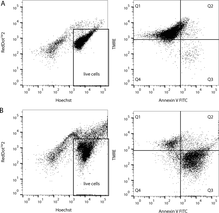
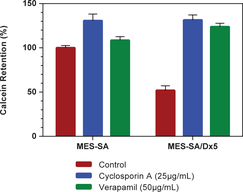

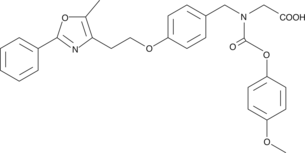














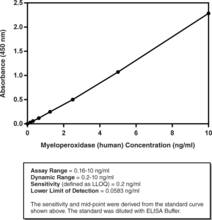
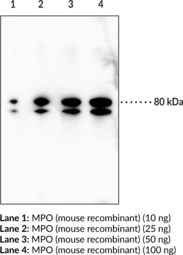

![Cayman’s Myeloperoxidase Chlorination Fluorometric Assay provides a convenient fluorescence-based method for detecting the MPO chlorination activity in both crude cell lysates and purified enzyme preparations. The assay utilizes the non-fluorescent 2-[6-(4-aminophenoxy)-3-oxo-3H-xanthen-9-yl]-benzoic acid (APF)](https://interpriseusa.com/wp-content/uploads/2021/04/10006438.png)



